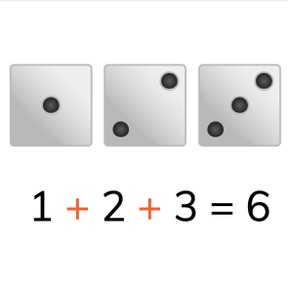



8,000 schools use Gynzy
92,000 teachers use Gynzy
1,600,000 students use Gynzy
General
Students can add three addends together to a total of 10.
Relevance
It is important to be able to add three or more addends. In some situations, it is required, for example when you do groceries, see groups of animals, or play a game with 3 dice.
Introduction
First practice with addition with 2 addends with visual support.
Development
First discuss the importance of being able to add with 3 addends. Next the learning goal will be explained in visual, abstract, and story forms. You can navigate through the lesson in the menu found in the bottom right of the lesson. If you start at the beginning, you start with visual support of adding with three addends. Explain, using the images as support how to add three addends together. Next discuss how to add with problems without visual support. If you want to help students by making the problem visual, move the cover on the interactive whiteboard. Next repeat the steps of how to solve a story problem. Students can click on the speaker icon to have the story spoken aloud. Make sure that you explain the steps with the students and have students do a few exercises to show their understanding.
Check that students have understood adding to 10 with three addends by asking the following questions:
- Why is it useful to be able to add?
- How do you add an addition problem with three addends together? What do you do first? And then?
Guided practice
First do an addition problem together as a class with visual support. Next is an abstract addition problem without visual support and finally a story problem.
Closing
Repeat the learning goal and ask why it is useful to be able to add multiple addends, and ask students what the first step is in this kind of addition problem. Divide the class into groups of 4 or 5 students and give each group 3 dice. A student throws the dice and calculates how many dots there are. If they throw a number less than ten, they get a point. If the student throws more than 10 they don't need to add to find the total, and the next student gets a turn.
Teaching tips
Students who find it difficult to solve these problems can be supported by the use of manipulatives to help visualize the process.
Instruction materials
3 Dice per group of 4 or 5 students
The online teaching platform for interactive whiteboards and displays in schools
Save time building lessons
Manage the classroom more efficiently
Increase student engagement
Discover more!
About Gynzy
Gynzy is an online teaching platform for interactive whiteboards and displays in schools.
With a focus on elementary education, Gynzy’s Whiteboard, digital tools, and activities make it easy for teachers to save time building lessons, increase student engagement, and make classroom management more efficient.



